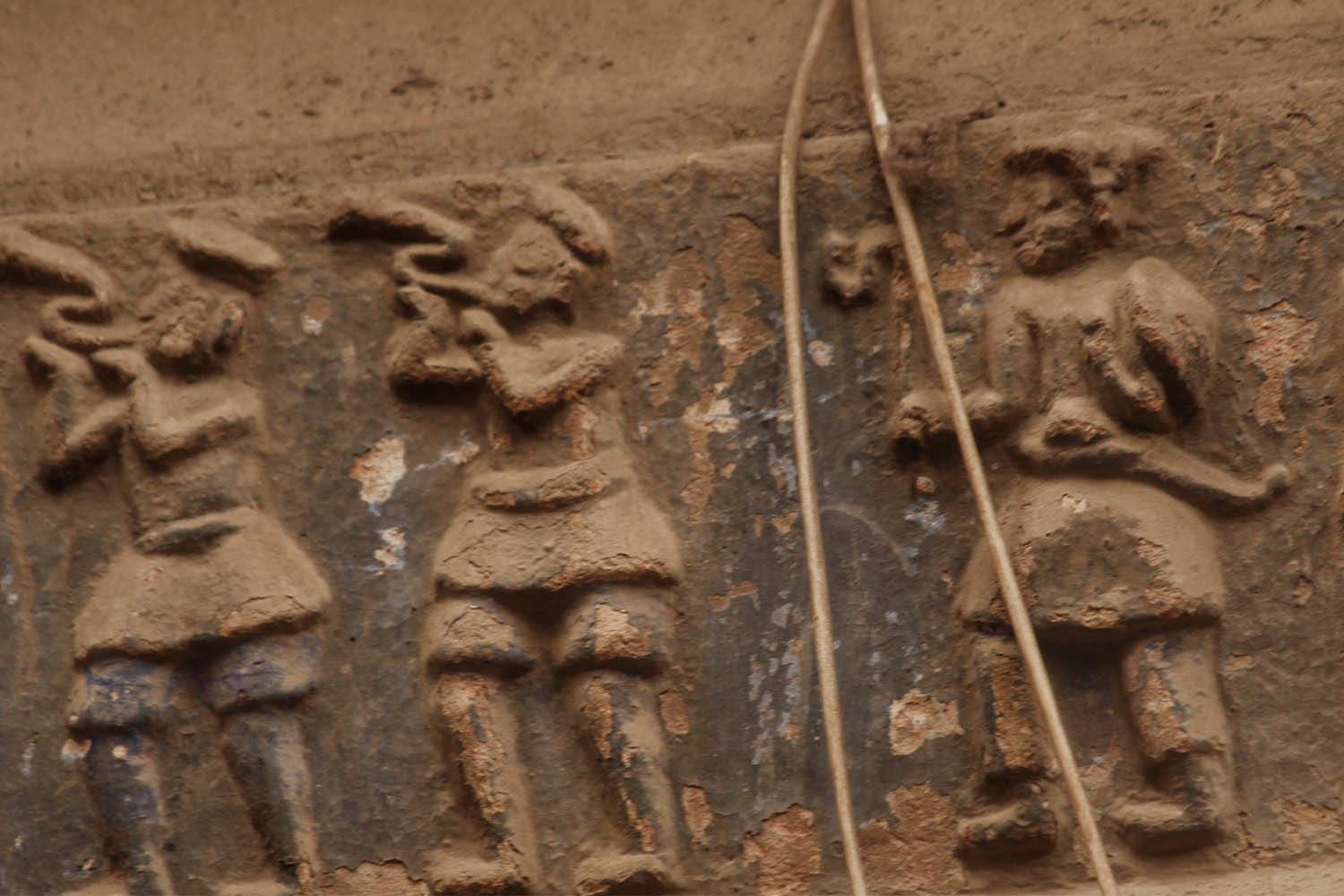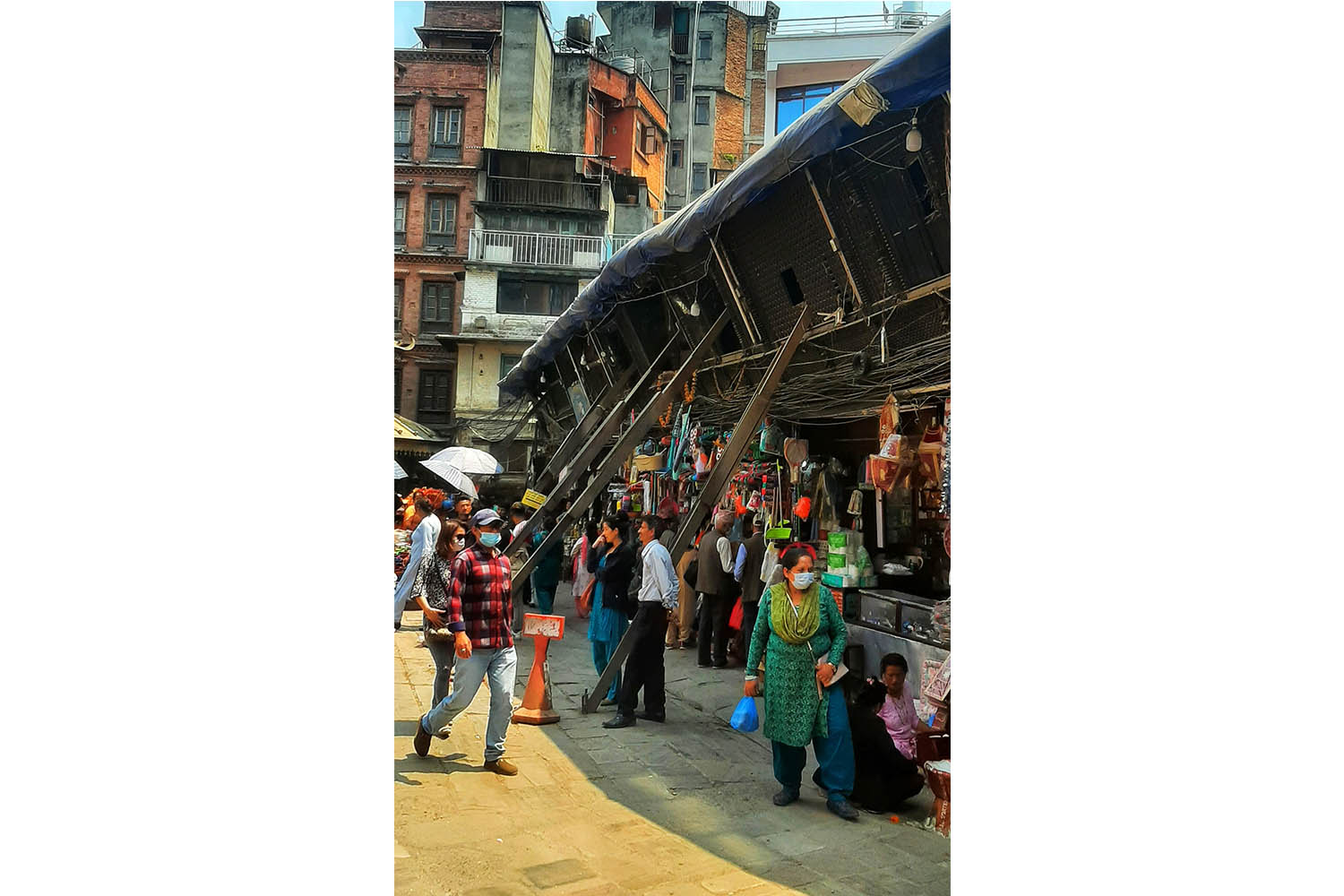Culture & Lifestyle
The forgotten heritages of Kathmandu Valley
From ancient quarantine sites to royal residences and early electrical innovations, the Valley’s hidden treasures face neglect and deterioration.
Sanskriti Pokharel
The alleys of Asan and Patan carry historical significance. It is common to spend hours there, admiring the architecture, looking for local products and handicrafts, clicking photographs, and enjoying street food.
While admiring architectural details, how many of us ponder their history? How many of us have an eye for lost heritage?
Such questions led me to speak with Sambid Bilas Pant, a freelance writer and lecturer specialising in history, culture, heritage, research methods, and academic writing.
When Pant was about nine years old, a random visit to a museum became the catalyst for his work in this field. He visited the National Museum of Nepal in Chhauni for the first time with his mother and sister. The historical artefacts he witnessed there fascinated him and ignited his curiosity about history and culture.
According to Pant, Asan, though it is near the lively area of Basantapur, not many people know its historical significance. It houses various heritages that need to be explored and remembered.
Even before the public knew about pandemics and quarantines, Asan was designated for isolation in ancient times. When Nepali merchants and travellers returned from India and Lhasa, they were isolated in different buildings in Asan to prevent the spreading of any diseases they might have brought.
A structure called Yita chapa (Southern pavilion), which was one of the quarantine homes from the 13th to the 18th centuries still exists in Asan. This structure is not just a building but a symbol of how advanced and farsighted Eastern civilisation was.

Today, the ground floor of this structure houses local shops.
Isn’t that fascinating? A building, over 500 years old, still stands in the bustling streets of Asan.
However, the 2015 earthquake caused a few cracks in the building, and now, it is on the verge of collapsing. Struts have held the building together—preserving its historical significance.
But how long will the struts remain loyal? How long can the building stand?
If the local government continues to neglect it and does not initiate renovations, it will neither become a major tourist attraction nor preserve its unique history.
Near the Yita chapa (Southern pavilion), Amitabh Buddha’s statue, a major Buddha in Mahayana Buddhism, is present in Ashok Brikshya Bihar. Locals believe that this statue is more than 500 years old.
Just like how Siddhartha Gautam left his palace and throne, Amitabh Buddha, too, gave up his throne and pursued a path of practising Buddhism far from the palace.
During the Malla era, Ashok Brikshya Bihar was the centre of Buddhism. The place was so significant that devotees from Tibet and India used to visit there.

According to the locals, plans to demolish Bihar and establish a shopping centre have been put forward. The locals protested against this decision.
A carved stone inscription once proved the significance of the Bihar, but according to the locals, the inscription was stolen. If the decision to erect a shopping centre materialises, the historical monument will be lost forever.
After Prithvi Narayan Shah conquered Kathmandu, the commander in chief of the Shah king and the Gorkha army, Abhiman Singh Basnet, built a massive Mughal architectural building with glass windows. This building, named Paltan Chhen, is Nepal’s first private house to have glass windows. Before Paltan Chhen was constructed, there were houses with wooden windows.
Below the glass window, the miniature images of 72 soldiers and Basnet himself are engraved. That is why it is named Paltan House. The original manuscripts of King Prithvi Narayan Shah’s Dibya Upadesh were found in this building.
It also housed seven courtyards, which are turned into private property now. Different courtyards and parts of the building belong to different people.
King Rana Bahadur Shah used to sit on the balcony and watch wrestling matches in the courtyard. However, since it has become private property, common people can no longer explore it.
Had it not turned into a private property, the courtyard might have been converted into an army museum, and artefacts present in this area could have been open for public viewing. In this way, both the building and the artefacts could have been preserved.
Today, most of the glass windows are broken, many of the engravings are already damaged and the building is also in a bad condition.
Chyasal also has a rich historical significance. A statue of Gajalaxmi is present there, and according to locals, it is the oldest statue in Kathmandu Valley. The Gajalaxmi is ornamented with big earrings, anklets, and other artistic ornaments.
The intricacies of details and decoratives in the idol of Laxmi resemble the 1st-century idols of Mathura. So, locals believe that the idol might be 2000 years old.

However, that the goddess is not placed inside a temple but behind bars is an irony. It is exposed to sunlight and acid rain. No one looks after it. The intricacies of details are fading away, and the renovation has not been done.
“I recently visited and couldn’t make out the features of the Gajalaxmi. If renovations aren’t done soon, it will erode to the point of becoming unrecognisable,” Pant lamented.
There is a school in Patan called Adarsha Kanya Niketan Secondary School that used to be a palace. Because it used to be a palace, the windows are large, and the doors are about 12 feet long. Silkhana Durbar was its name.
It was built in the 18th century by Bahadur Shah, the youngest son of King Prithvi Narayan Shah. During his exile in India, Anglo-Indian and Mughal architecture captured his interest. Inspired by these artistic styles, he built Silkhana Durbar after returning. This is also the last contribution of any royal in the Patan Durbar Square area, making it the most recent royal historical monument.
In the 1990s, when Nepal was hit by a massive earthquake, the then palace was used to provide donations to the needy. Today, this significant historical monument has turned into a school. This is not just one historical monument that has been converted into a school.
Akin to the Silkhana Durbar, Bhaktapur’s last king, Ranajit Malla’s palace has also been converted into a school. Because it is now a school, heritage sites like these are hard to access and cannot be explored by common people like other heritage sites.
Pant says, “People should have access to witness, explore, and experience heritage sites. Without access, the public won’t know about them, and these heritages will remain forgotten. They will not know that the famous Durbar squares in Patan, Bhaktapur, and Basantapur are not the only Durbar squares in the valley.”

Moreover, Baneshwar is named after a temple, Badeshwor Mahadev, which is located inside the Ratna Rajyalaxmi Campus. In 2020, during the school's renovation, a few archaeological discoveries were made. Many feet under the ground, a shivalinga and the idol of Nandi were found.
There may be other artefacts and monuments as well. However, since it is inside a school, there are restrictions, and excavation work has been hindered. This is why people do not know that Baneshwar is named after a temple, as the temple has been hidden inside the school.
A building in Khokana called Bizuli Ghar is the first-ever local house in Nepal to be lit by electricity. At the beginning of the 1900s, the Ranas wanted their palaces lit, leading to the development of the Pharping hydropower project. After its completion, to avoid any potential harm to the Ranas' palaces, the electricity was tested elsewhere. The Rana chose the house of a commoner involved in the project for these tests.
When the electricity bulb lit up the house for the first time, people in Khokana gathered there just to witness the miraculous event.
The house was converted into the Khokana Museum. Today, if you visit, you'll see a sign that reads ‘Welcome to Khokana Museum,’ but underneath it is a large key that locks the museum’s door.
The museum was damaged by the 2015 earthquake and is currently inaccessible. If no renovations are undertaken, it might remain closed forever.




 14.83°C Kathmandu
14.83°C Kathmandu















